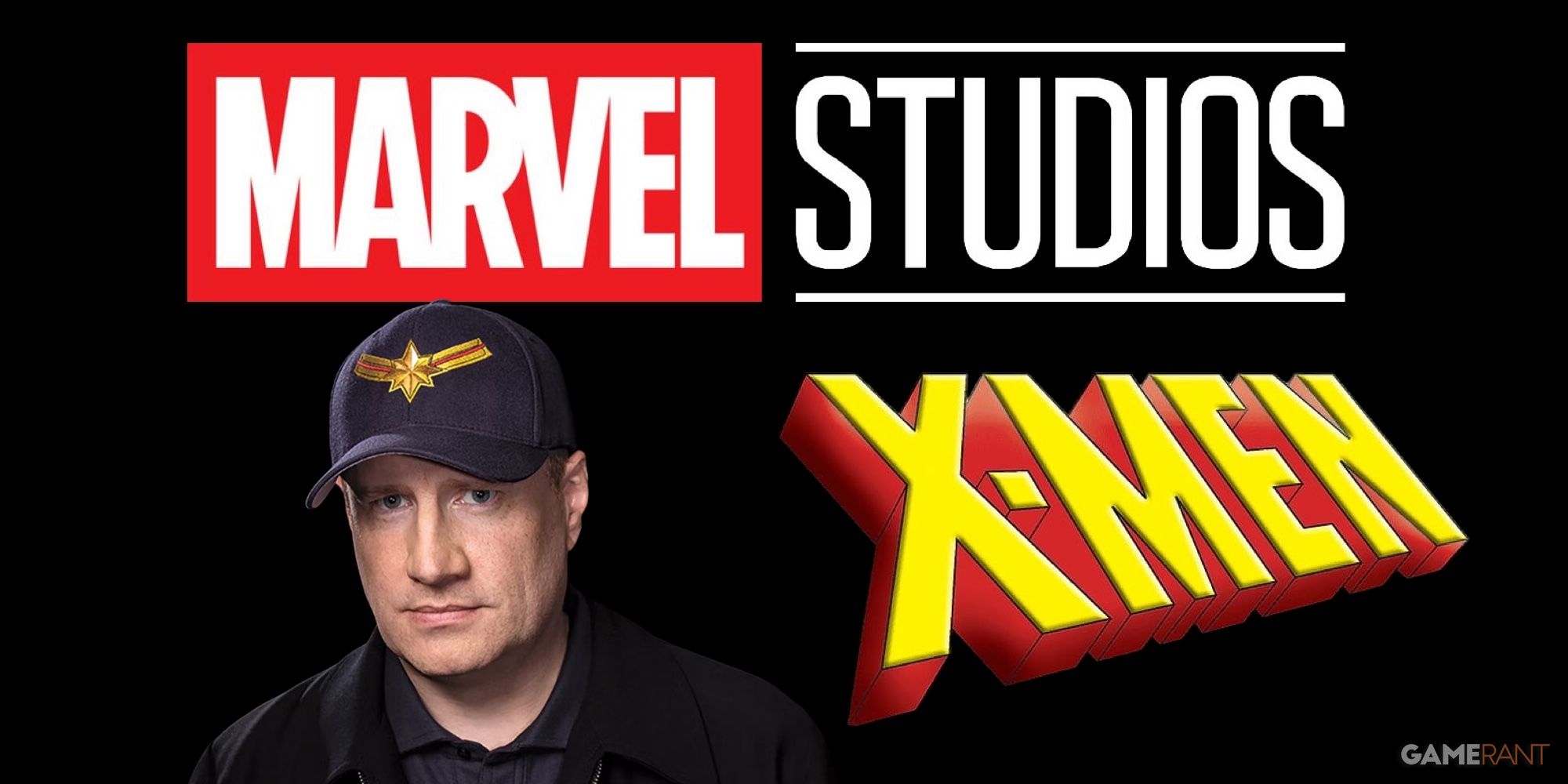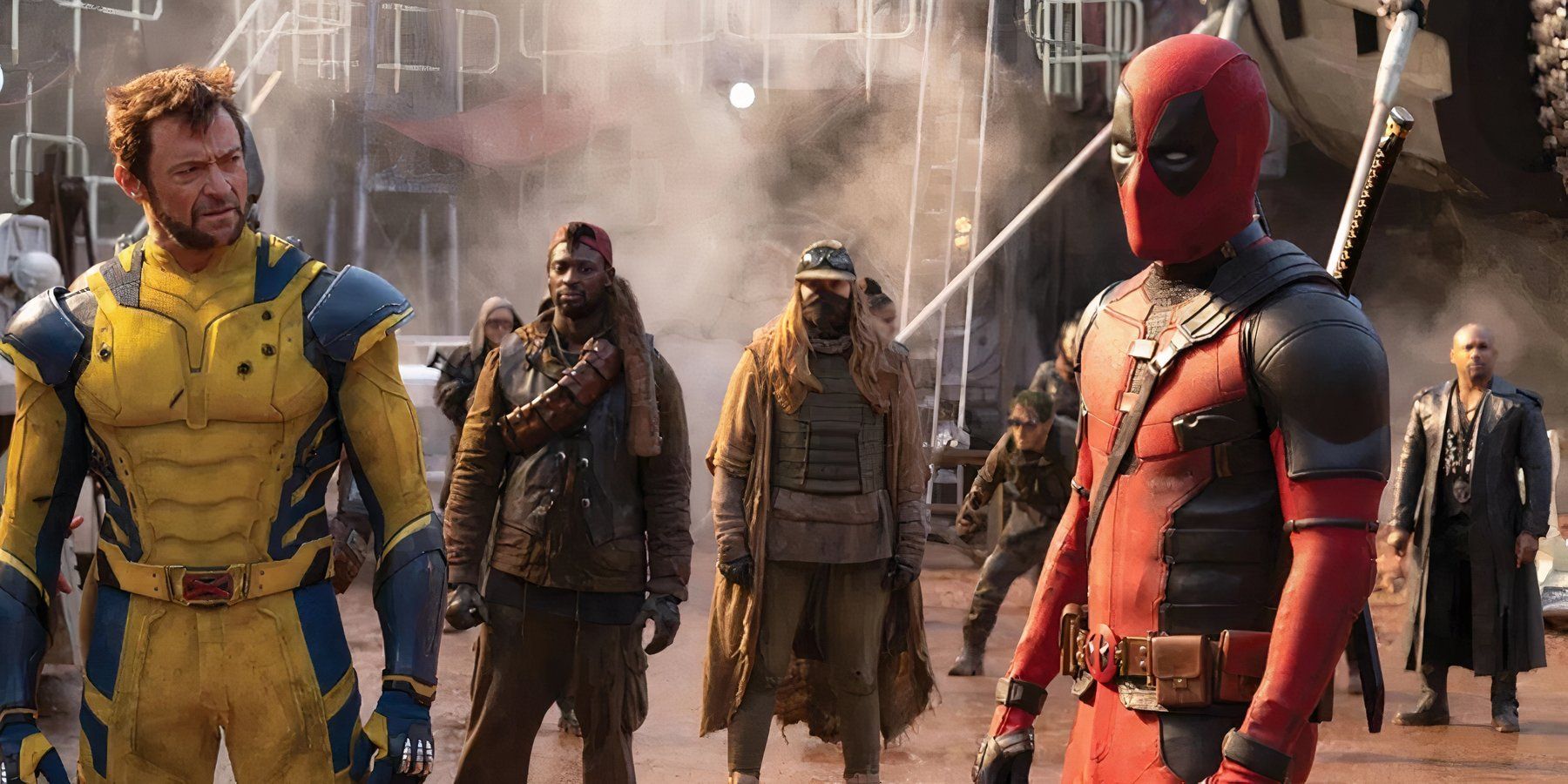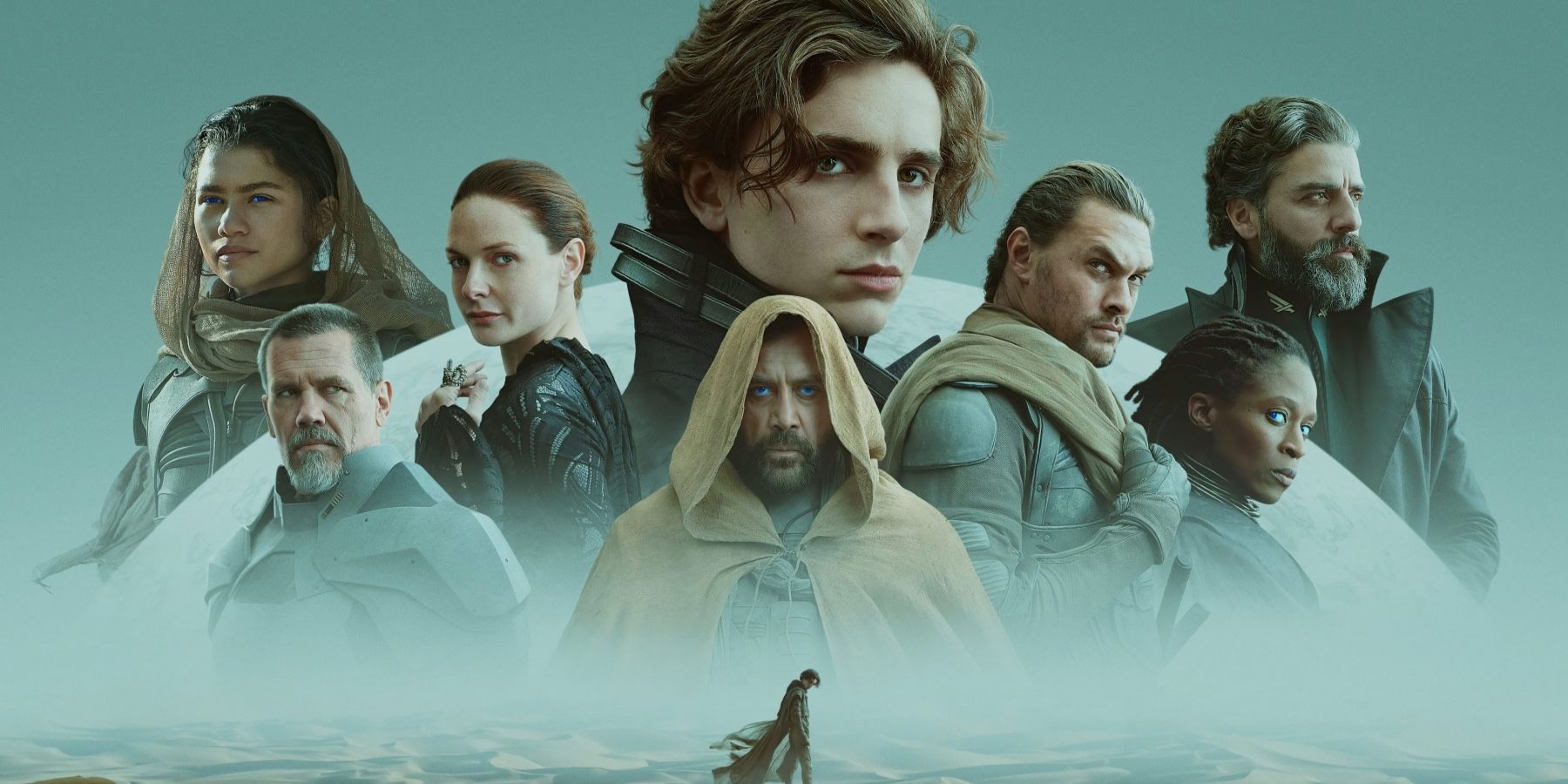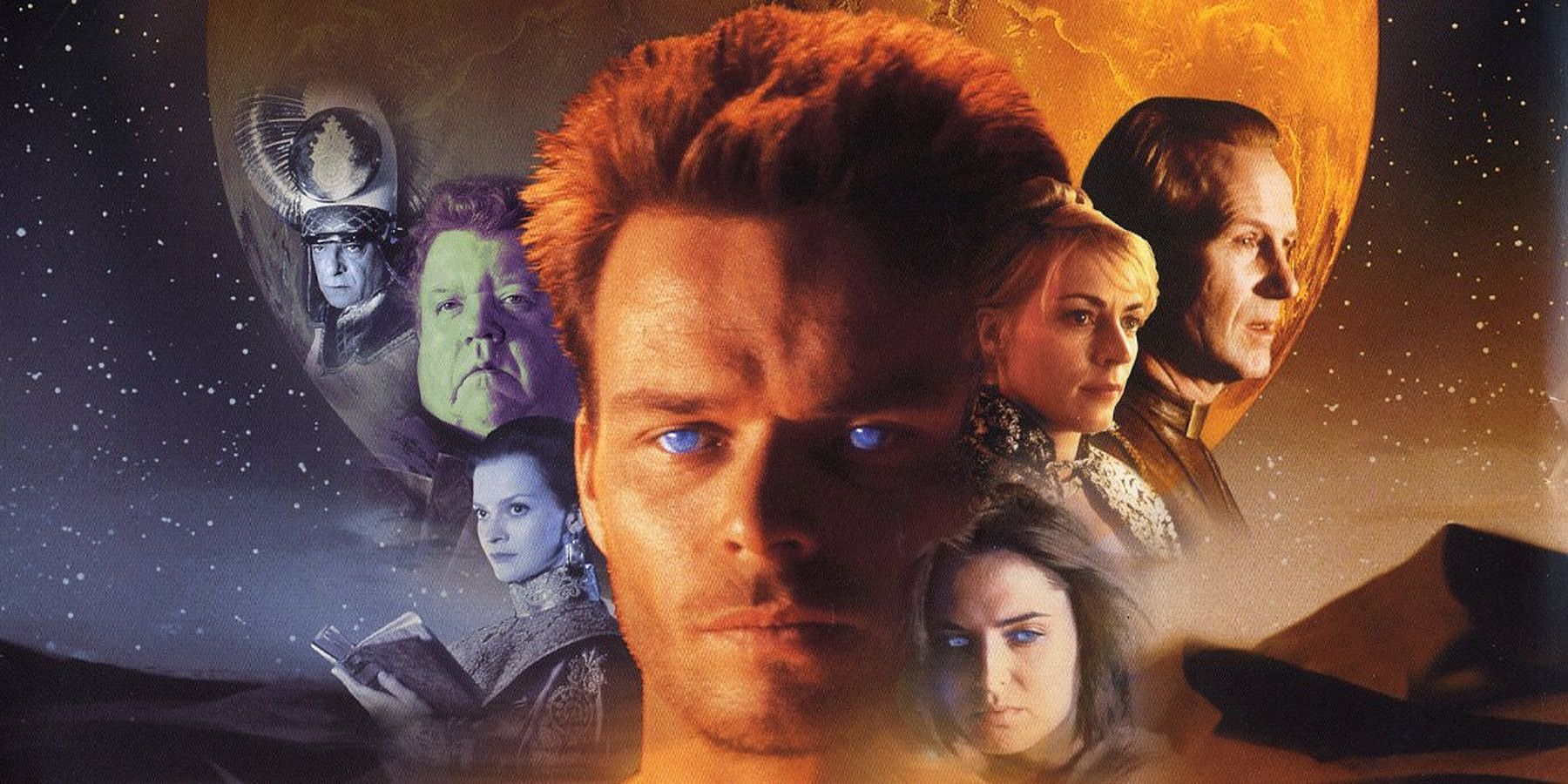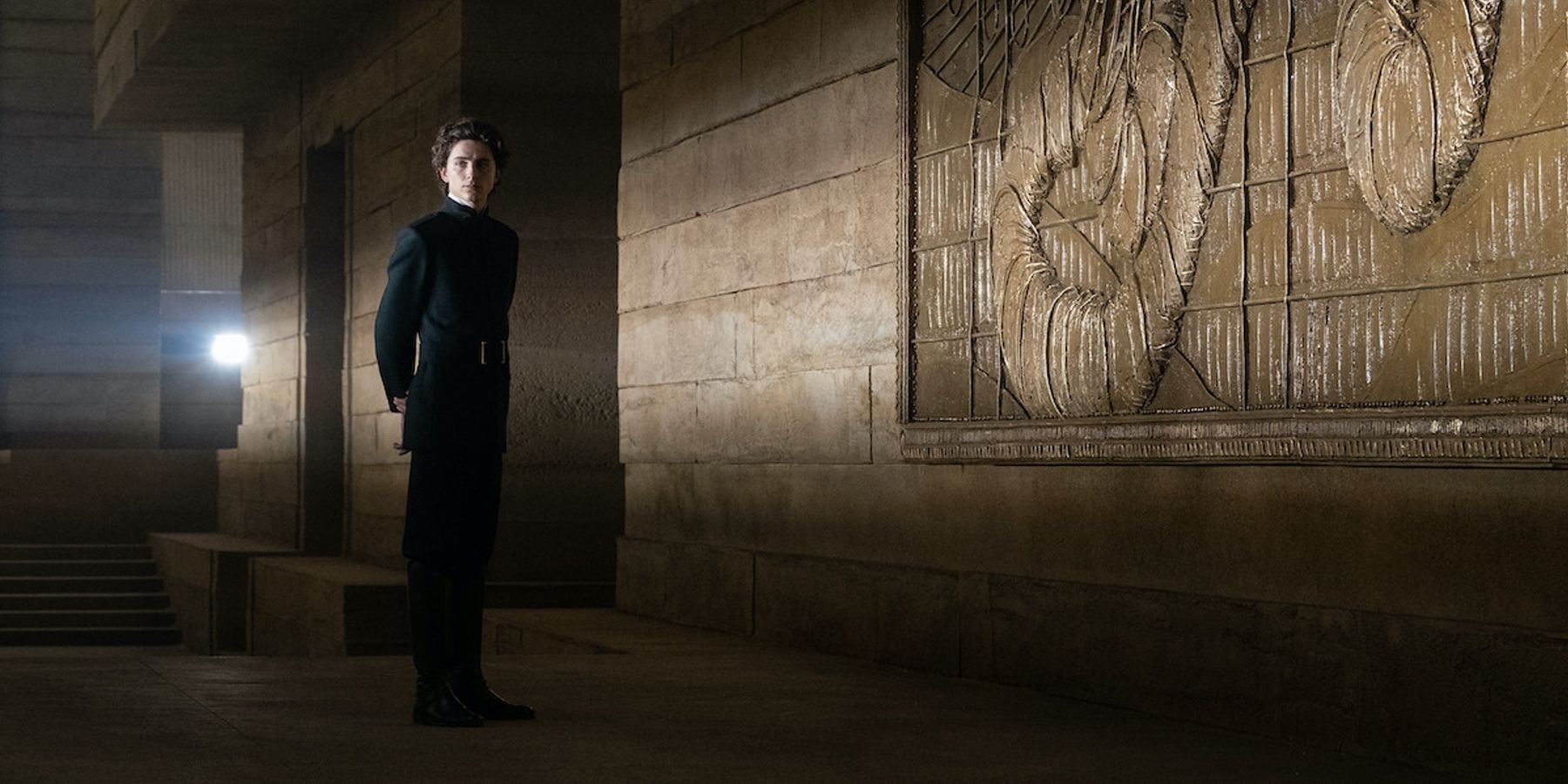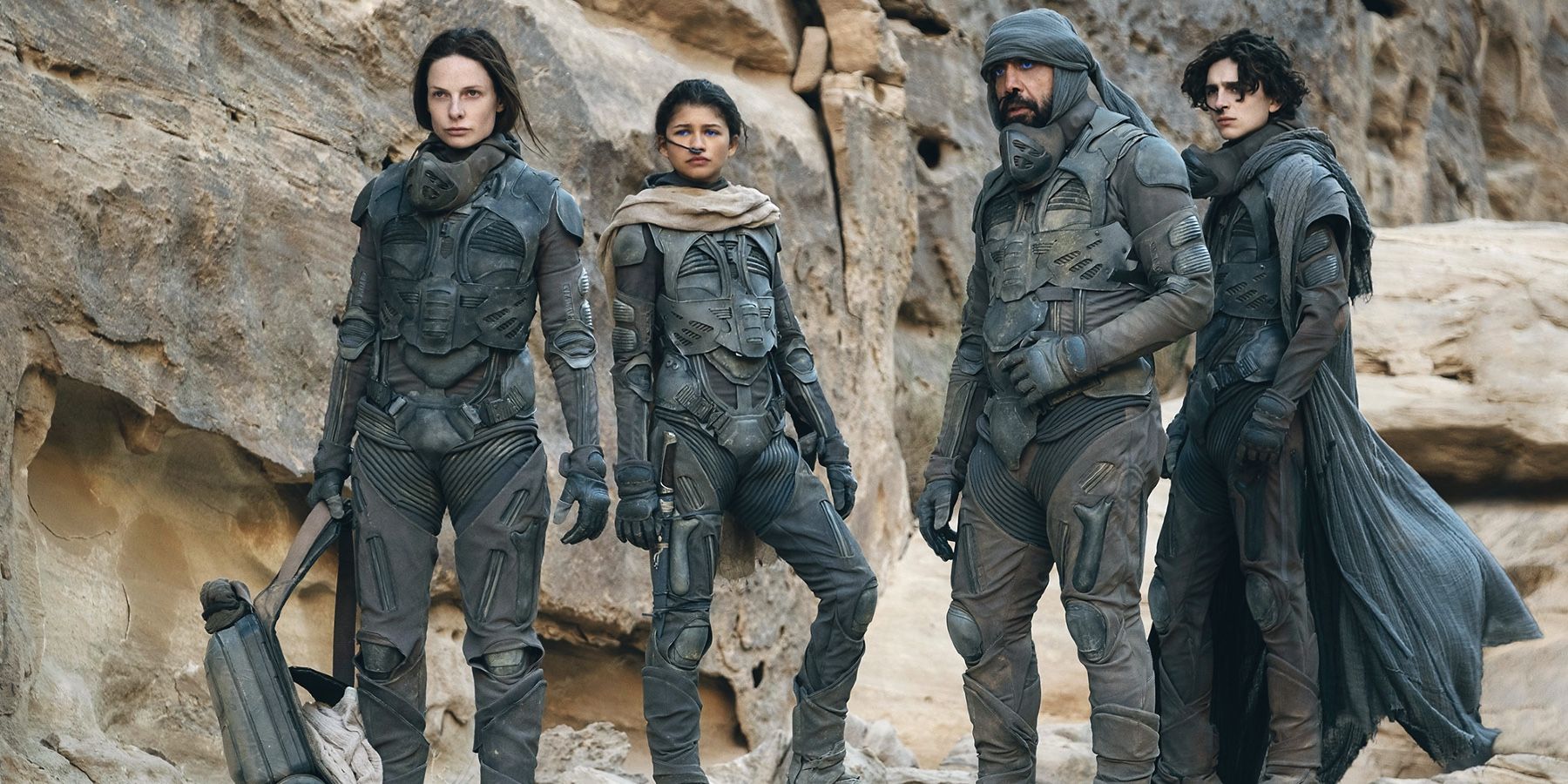For audiences who remember the 2000 Sci Fi Channel miniseries adaptation of Frank Hebert’s Dune, the 2021 Dune movie will be as familiar as it is alien. The two adaptations contain many of the same scenes, built around the same dialogue — yet they are boldly differentiated by interpretation. While the miniseries is a vivid, epic tale of strange worlds, Villeneuve’s film is a slow, thoughtful meditation on humanity’s relationship with power. Both adaptations take on colonization and legacy, but they examine these themes through disparate lenses, finding different insights and, ultimately, telling different stories.
The first (and most obvious) difference in the two adaptations involves scene and setting: how the world of Dune is interpreted and rendered visually. The miniseries initially presents Dune as a story set In Space™. It conveys this at every possible opportunity, through various spaceships and star-strewn B-roll. Interior settings and on-planet exteriors are realized in lurid colors, mixing sleek, ultra-modernized design elements (the perennial code for technology-fueled futurism) with lavish costumes and elaborate sets (the perennial code for political intrigue among a ruling class). The Atreides wear white, and the Harkonnen wear red; the miniseries breaks no new ground in its coding of righteousness and scheming. Yet the result, while not subtle, is undeniably effective: the visuals reinforce that this is a somewhat-exaggerated melodrama, akin to the melodramas that comprise human history.
The new movie, by contrast, is extremely grounded from the outset. It introduces House Atreides in a distinctly terrestrial setting, as when the Atreides patriarch discusses legacy with his son among the weather-beaten graves of an ancient-looking cemetery. While the story still contains much that is futuristic, the characters and their conflicts are recognizably human. They are small players in a vast universe, their insignificance underscored by low, wide camera angles that emphasize the space around individual figures. This is an introspective, interiorized Dune: its fictional setting and the mystical players within are constantly subordinated to the perspectives of the characters at its core. Exposition (which is sprinkled liberally throughout the miniseries) is delivered in the 2021 film chiefly through character interactions and carefully-worded dialogue. Stakes are conveyed through the nuances of reaction and emotion. Even the editing is fine-tuned to the individualized experience of sweeping geopolitical conflicts happening in the background. Nothing in the story is related to the viewer without first being filtered through the characters.
So who are these characters? In the Dune miniseries, they are a collection of familiar tropes: the benevolent father and patriarch, Leto Atreides (William Hurt); his reluctant heir, Paul Atreides (Alec Newman); and his mysterious consort, Paul’s mother, Lady Jessica (Saskia Reeves). From his first appearance, Leto is marked as a good and righteous man by both the love of his family and the wisdom of his official decisions as the new governor of Arrakis. Jessica, his sole companion (but not, as is made very clear, his wife), is generally reserved, but her connection to ancient and transcendent knowledge marks her as worthy of respect from the Fremen — the native inhabitants of Arrakis — although the same knowledge garners suspicion from her peers within the ruling class. Members of that ruling class include the Emperor and the enemies of House Atreides, House Harkonnen. The resulting ensemble is a particular asset of the miniseries, as it uses a multi-faceted perspective to enhance the facets of political intrigue driving its plot.
And then there is Paul. Petulant and arrogant, Alec Newman's Paul bears striking similarity to the protagonist of another beloved space franchise (although he whines less). Whereas the miniseries distributes focus to the players and forces that will shape Paul’s story, the movie orients the viewer chiefly through Paul (Timothée Chalemet), whose outbursts of impatience are tempered by demonstrations of competence. Jessica (Rebecca Ferguson), too, has more subtlety than her miniseries counterpart. She seems both beholden to and uncertain of the mystical Bene Gesserit to which she belongs, less remote in her devotion and more human in her emotion. This version of Jessica is worthy of an actress with Ferguson's skill. Viewers cannot help liking her, even as the story suggests that they should mistrust her. Of the principal characters, Leto Atreides (Oscar Isaac) is the most consistent, remaining a benevolent patriarch — if a more contemporary version of the trope, incorporating more authority and more accessibility than his predecessor.
Of course, patriarchy is an essential aspect of the Dune story. Both adaptations begin with a Fremen narrator describing the imperial presence on the planet Arrakis and what that imperial presence means for the Fremen. The film version uses subtly different language to describe this colonization, reflecting the evolution in its audience’s understanding of imperialism, but the journey of the protagonist into the world of the Fremen remains a cornerstone of the narrative.
The most noticeable change is in the Fremen themselves: instead of a mysterious, exoticized Other, they are an unknown quantity. The few Fremen who interact directly with the Atreides do so in a way that keeps their culture separate from the knowledge of their colonizers. This shift, from hidden to separate, leaves the mystery intact, but it gives the Fremen more agency, more identity, by shifting the burden from Paul (to discover) to the Fremen themselves (to disclose). Nowhere is that more clear than in one of the final scenes of the movie, when Paul has to duel a Fremen challenger and prove his right to continue on his quest, before he can seek refuge in the Fremen community.
On the whole, the primary difference between miniseries and movie is one of style, not substance. Both tell the same story, with many of the same scenes and much of the same dialogue. Where the movie takes its time establishing conflicts through a few characters, the miniseries uses a broader perspective to establish the world quickly, filling in with exposition where needed. The result is a sort of historical record: two accounts that focus on different aspects of a single narrative. One is an objective overview; the other, a firsthand retelling. Both, however, are visually engaging, with a compelling story that has been a genre staple for over fifty years.
If there is something that sets either adaptation apart, it must be the peerless cinematic prowess of Denis Villeneuve. The director has brought to Dune the same forceful craftsmanship that earned him his reputation for stylish sleeper hits (Blade Runner 2049, Arrival). In Dune, Villeneuve has provided the experience for which fiction exists in the first place: a world realized so exquisitely, with so much detail, that audiences can lose themselves in its sensory details (including the score, which deserves its own review). Audiences experience the story, rather than just watching it.
Then again, Villeneuve’s Dune has only told half of a two-part story. Until next year, audiences should watch the miniseries (or read the book) if they want to see what happens next.

